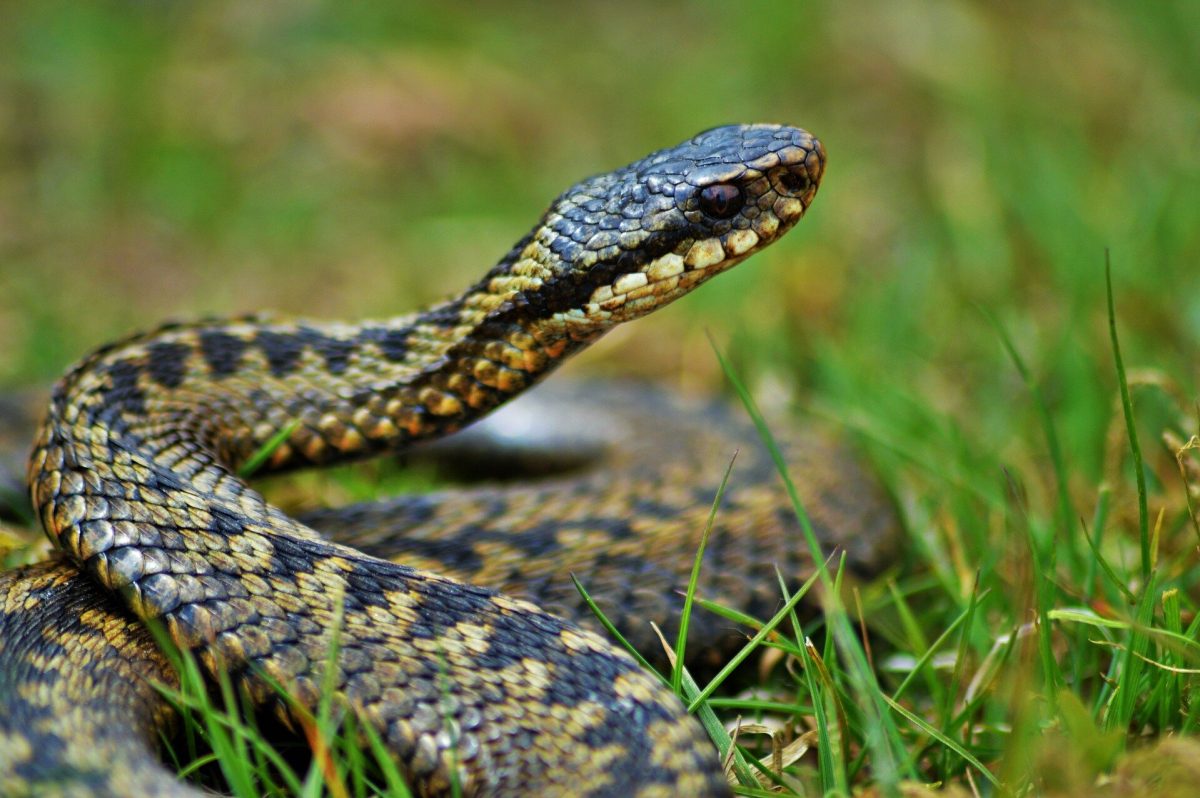Love them or loathe them (we are the former) our native snakes need understanding
As a child in the rural Scottish Borders, one of the ‘bogey men’ I was frightened of was an adder! Reviled as evil and almost predatory of wee lassies who didn’t take care, you would have thought there were alligators on the loose, not a British reptile. Fear of snakes is common but it’s more true to say they are more frightened of us. Noise disturbs reptiles so whilst out walking, striding forth purposely, perhaps even tapping the ground with a stick can forewarn them you are coming! We have 3 snakes in Britain, the adder, the grass snake and the smooth snake. We also have a snake that is not a snake, the slow worm which is a legless lizard! Adders are our only venomous reptile and their bites can be very dangerous to pets. A nosy dog can be bitten on the face or even an inquisitive cat on the leg/paw if they disturb a snake. It’s impossible to completely prevent this but you can take some precautions.
Snakes need the heat of the sun to warm up, especially after coming out of hibernation. Classic basking spots in the garden are
- Rock or wood piles.
- Rockeries and compost heaps.
- Over grown grass.
- Small cracks under sheds/greenhouses.
Out in the open countryside, snakes will make use of
- Rocks, stones, sandy or dry paths.
- The cover of bracken and heather.
- Any open sunny area free of shade.
- Water source.
If you wish to deter snakes from your garden, making sure they have as few places as possible to shelter and rest is key. A busy, tidy garden is not one for snakes! If you wish to encourage our scaly friends then leave some places undisturbed, grass snakes especially like ponds and streams.
How do you tell the species apart? Adders are the most distinctive having a zig zag pattern down their back. The Wildlife Trust has a great guide on how to spot the differences. All our native reptiles are protected under the Wildlife and Countryside Act of 1981 (as amended). Killing, injuring or selling any species is an offence. Most reptiles die within their first year but if they make it through those 12 months, they can live upwards of 10 years! Sadly, all our species of reptile have declined dramatically over the last 30 years with loss of habitat being the primary cause.
What should you do if you suspect your pet has been bitten? Stay calm and most importantly, keep your pet calm. Contact your veterinary surgery immediately. If the snake is still visible try and get a photo for identification but it’s more important to get to a vet ASAP. If at all possible, carry your pet to the car.
I may have been scared as a child but with education and understanding I have come to appreciate all our reptiles, including adders, for the wonders they are. For more information, visit RSPCA England & Wales Living with wildlife .

